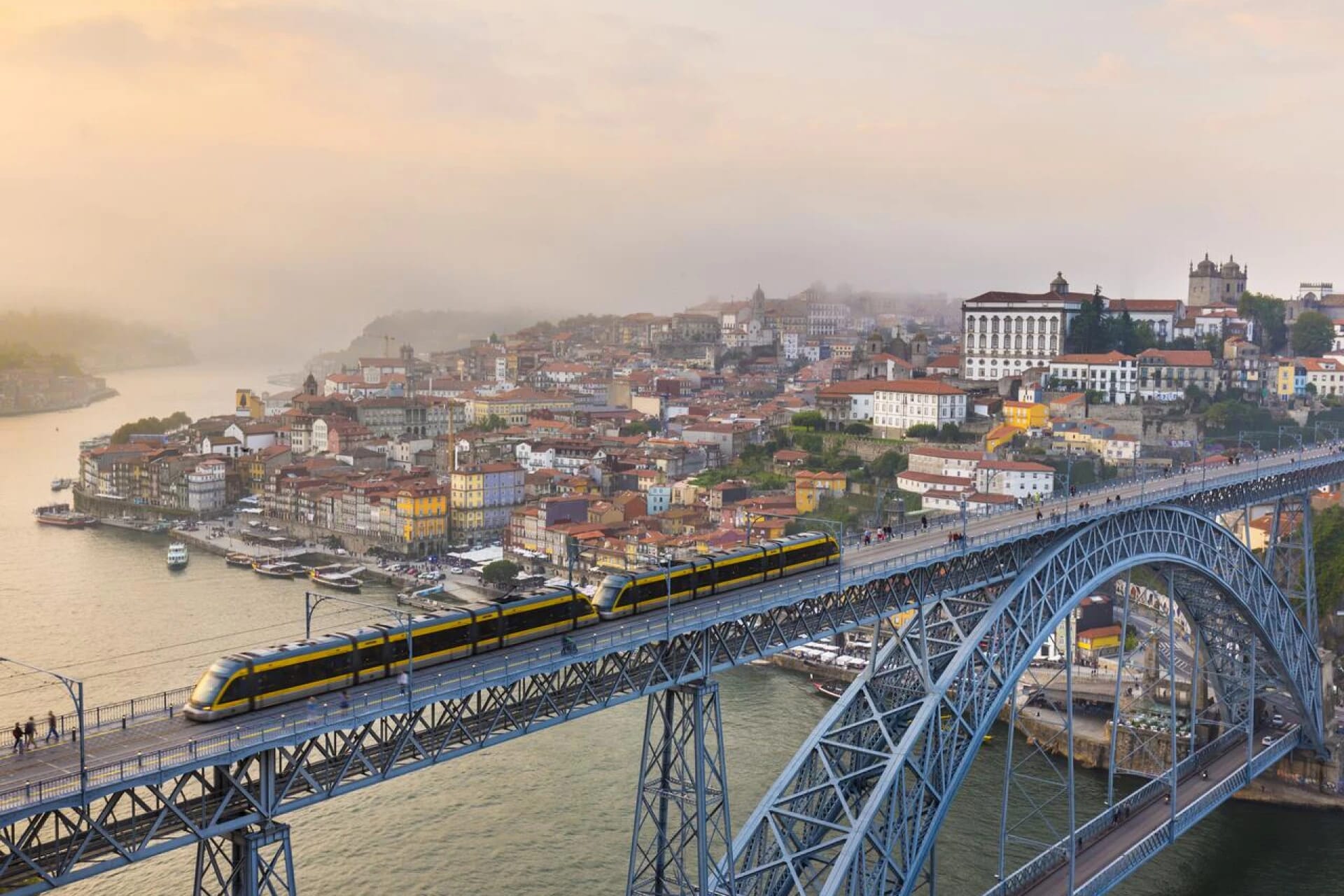An Introduction to the Dom Luís I Bridge
The Dom Luís I Bridge, also known as the Luiz I Bridge, is an iconic iron arch bridge located in the city of Porto, Portugal. Inaugurated in 1886, this magnificent engineering feat was designed by Belgian engineer Théophile Seyrig, who was a disciple of Gustave Eiffel, the famous architect responsible for the Eiffel Tower in Paris. The bridge connects the banks of the Douro River between Porto and Vila Nova de Gaia and is one of the city's main tourist attractions, as well as being a historical and cultural landmark in the region.
A 19th Century Engineering Work of Art
The Dom Luís I Bridge is an impressive example of 19th century engineering, with its imposing iron arches and steel structure.
The construction of the bridge was a remarkable feat at the time, using more than 3,000 tons of iron and innovative construction techniques.
With a span of 172 meters and a total height of 45 meters, the double-deck bridge remains one of the largest iron arch bridges in the world.
A Symbol of Progress and Modernity
The construction of the Dom Luís I Bridge represented a significant step in the urban and economic development of Porto and Vila Nova de Gaia.
The bridge facilitated the movement of people and goods between the two banks of the River Douro, contributing to the expansion of the city and the growth of industry and commerce in the region.
Its inauguration symbolized progress and modernity, reinforcing Porto's position as a leading city in Portugal and Europe.
The Bridge as a Protagonist of Cultural and Sporting Events
Over the years, the Dom Luís I Bridge has become the stage for various cultural and sporting events, from concerts and theater shows to races and extreme sports competitions.
Its imposing arch is also a popular venue for firework displays, which light up the Porto sky during the São João and New Year festivities. In addition, the bridge is often used as a starting point for international sporting events such as the Red Bull Air Race and the Extreme Sailing Series.
The Bridge in the Daily Life of Porto
The Dom Luís I Bridge plays a fundamental role in the daily life of the inhabitants of Porto and Vila Nova de Gaia. The upper deck of the bridge is currently used by the Porto Metro, while the lower deck is reserved for car and pedestrian traffic.

